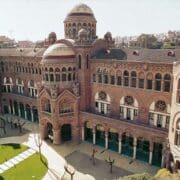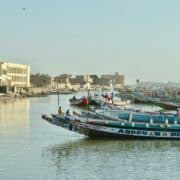Long term growth predicted for Peru
The Republic of Peru is fairly new to the global education sector but as one of the fastest growing economies in Latin America, it holds much promise for the future. To learn more about market opportunities, ICEF Monitor sits down with Carolina Cardoso from C2M Marketing & Eventos, a boutique company based in Brazil which specialises in trade shows, events and market research. Mrs Cardoso explains that now is the right time to enter the Peruvian market and invest in laying the groundwork and establishing your brand, so that those connections will pay off in two or three year's time. As the capital, Lima is the main city of interest for international student recruitment. The biggest demand at present is for language courses, and in terms of degrees, courses in mining, engineering, and construction are popular. As we reported last year, Peru is investing more than US $136 million in science and technology (S&T) and 1,000 new S&T postgraduate fellowships will be made available by 2016, as well as 1,500 scholarships for Peruvian students at foreign universities. Peruvian's favourite countries are the classic study destinations such as UK, Australia, US and Canada. Most students feel that, given Peru's healthy economy, there are great opportunities at home for those who have distinguished themselves through studying abroad, so Peruvians prefer to return home following their education overseas. But the country still has a long way to go. Its economy has been described as "a mash-up of strengths and weaknesses" with government figures reporting an average growth of 6.4% a year from 2002-12, figures certainly admirable but not necessarily sustainable. Almost one third of Latin American families are now considered to be middle class, and Peru clearly recognises high quality education as a path to growth and success. Efforts are underway to increase access to higher education, currently only available to three out of ten Peruvian high school students. According to the Netherlands organisation for international cooperation in higher education (NUFFIC), "In 2010, 15,500 Peruvian students were studying abroad, mainly in Spain, the US, Italy, Cuba and France." NUFFIC also states that "Peruvian higher education institutions are increasingly interested in internationalisation and in initiating institutional cooperation with foreign higher education institutions." Just this month, the government launched the PEN 148 million (US $53.2 million) Public Investment Project for Higher Education Quality Improvement. This initiative will help dozens of Peruvian higher education and technical institutions improve quality measures and manage their accreditation process. And in further news, andina.com.pe has reported that "the Universidad San Ignacio de Loyola (USIL), a leading private university in Peru, is set to receive a US $23.5 million loan from the Inter-American Development Bank (IDB) to double its capacity from approximately 12,000 to 25,000 students over the next ten years, and expand access to affordable education programmes for low-income students. The loan will also help USIL establish a new student guarantee fund, support a new technical training institute, and increase its participation in Beca 18, a Peruvian government flagship scholarship programme targeting economically disadvantaged youth."
















